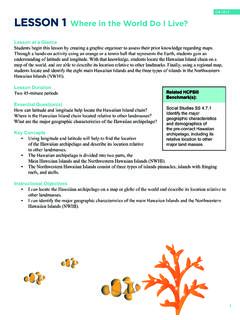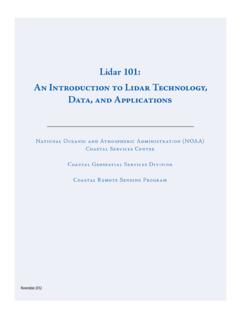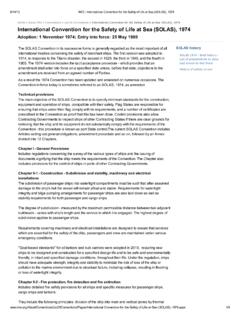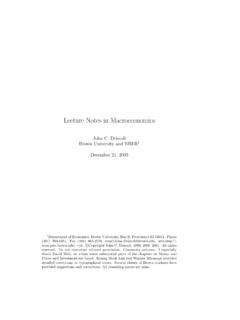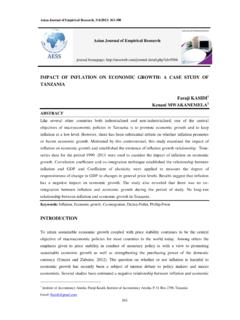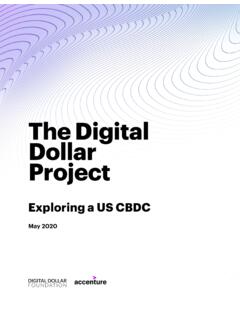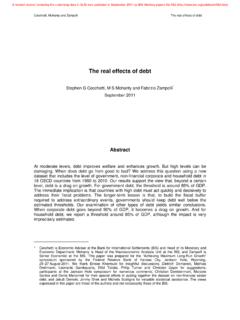Transcription of Introduction to Stakeholder Participation
1 Introduction to Stakeholder ParticipationSOCIAL SCIENCE TOOLS FOR COASTAL PROGRAMS Social Science Tools for Coastal ProgramsIntroduction to Stakeholder ParticipationAbout This PublicationSome of the most challenging decisions in coastal management stem from the relationship between people and the environment. NOAA provides technical assistance to coastal management professionals addressing complex human-based problems. This publication, Introduction to Stakeholder Participation , is the second in a series of guides developed to bring information to this audience about the use of social science tools in their field of work. For more information, or to obtain additional copies, contact our office at s Office for Coastal Management Coastal management is the term used by communities and organizations striving to keep the nation s coasts safe from storms, rich in natural resources, and economically strong.
2 The national lead for these efforts is NOAA s Office for Coastal Management, an organization devoted to partnerships, science, and good policy . This agency, housed within the National Ocean Service, oversees major initiatives that include the National Coastal Zone Management Program, Coral Reef Conservation Program, Digital Coast, and National Estuarine Research Reserve of ContentsIntroduction ..1 When Is Stakeholder Participation Needed? ..2 Identifying Stakeholders ..3 Stakeholder Analysis ..5 Key Features and Process Elements of Stakeholder Participation ..6 Stakeholder Participation in Practice ..9 The Continuum of Stakeholder Influence ..9 Stakeholder Participation Methods ..10 Evaluation of Stakeholder Participation ..12 Summary ..13 Work s Cited ..13 Appendix A: Guide to Common Stakeholder Participation Techniques ..141 IntroductionThe public s attitudes, perceptions, beliefs, and knowledge can have a profound effect on the success of coastal resource management.
3 While science can serve as a rational foundation for management, in many cases it is those groups impacted by resource management decisions that decide how acceptable a decision is and influence how effective management will be. Peoples experiences and culture, understanding of an issue, and support of an agency can each shape their support for and compliance with coastal resource management decisions and the past several decades, traditional top-down, agency-driven decision-making in natural resource management has generally moved toward processes that involve stakeholders (those who have an interest in or are affected by a decision) and acknowledge the importance of public attitudes, perceptions, beliefs, and knowledge. Stakeholder Participation has become a fundamental component of many state and local agencies operations, and federal legislation such as the Coastal Zone Management Act, the National Marine Sanctuaries Act, the Magnuson-Stevens Act, and the National Environmental policy Act (NEPA) mandates public Participation in some form.
4 Although there is no universally effective way to incorporate stakeholders, researchers and practitioners generally agree that Stakeholder Participation is important and has many benefits. Specifically, involving stakeholders in natural resource management decisions can accomplish the following: Produce better outcomes or decisions Garner public support for agencies and their decisions Bring to light important local knowledge about natural resources Increase public understanding of natural resource issues or management decisions Reduce or resolve conflicts between stakeholders Ensure implementation of new programs or policies Increase compliance with natural resource laws and regulations Help agencies understand flaws in existing management strategies Create new relationships among stakeholdersOf course, Stakeholder Participation can also pose challenges.
5 Involving stakeholders can be costly, time-consuming, labor-intensive, and confrontational, and can ultimately delay decision-making. Additionally, if improperly managed, Stakeholder Participation can create new conflicts or escalate existing document briefly examines several important aspects of Stakeholder Participation . While little consensus exists on Stakeholder Participation methods and procedures, and there is no one-size-fits-all approach, this guide presents a set of procedural elements common to many effective Stakeholder Participation projects and programs. Additionally, the document provides guidance on identifying coastal management stakeholders, describes some of the most commonly used techniques for Stakeholder Participation , and discusses evaluation of Stakeholder Is Stakeholder Participation Needed?It isn t always clear when stakeholders should be brought into a decision-making process because every case is different.
6 Obviously, minor decisions and emergency situations are generally not appropriate for Stakeholder Participation . Complex situations with far-reaching impacts, however, generally warrant Stakeholder involvement and are the focus of this document. Also, Stakeholder Participation done proactively, rather than in response to a problem, can help to avoid problems in the collaborating with stakeholders when Proactive engagement can help to avoid problems A problem has been clearly identified The best course of action is complex or not apparent Support of stakeholders is necessary for the decision to be successful Many parties are affected by the decision No single agency has clear or complete jurisdiction No single agency has the resources or expertise to make and implement a decision Issues and solutions are negotiable Parties are willing to collaborate(Adapted from NOAA Office for Coastal Management 2012)Other authors (Meffe and others 2002) propose four criteria for deciding when Stakeholder Participation is needed.
7 They suggest that public Participation be supported for management actions that are Special, rather than routine for example, development of a new statewide coastal conservation plan would require involvement, but maintenance of existing conserved sites would not. Major, rather than incremental for example, significant revisions to coastal dock permitting standards would call for involvement, but a gradual shift from paper-based dock applications to an electronic application system would not. Required of the public, rather than voluntary for example, development of regulations on wetland and shorefront buffers would call for Participation , but development and distribution of educational guides on effective buffer vegetation would not. Controversial, rather than unanimous for example, development of new regulations on beach stabilization structures would require extensive involvement, but raising fines for beach littering would , the time and resources needed for Stakeholder Participation mean that these methods may not be feasible, effective, or beneficial for all situations.
8 A judgment on whether to employ Stakeholder Participation may be necessary when Critical information on this issue is not available Quick action is required, given a mandated deadline or timeline Basic values or principles are the focus of the problem Legal clarification is needed Extreme polarization prohibits face-to-face discussion There is no Stakeholder concern over the issue(Adapted from NOAA Office for Coastal Management 2012)Characteristics of the issue at hand and the stakeholders involved will ultimately determine whether Participation is needed. If you determine that stakeholders will need to be a part of the decision-making, the following section will help you to identify and understand the stakeholders in your coastal StakeholdersPractitioners of Stakeholder Participation will jokingly define a Stakeholder as anybody who wants to be.
9 There is much truth to this broad definition. Stakeholders are generally those who have an interest in or are affected by a decision. Stakeholders are also those who have influence or power in a situation. Stakeholders interests in an issue can be monetary, professional, personal, or cultural, or can arise from a host of other knowing what a Stakeholder is doesn t always help you to identify the stakeholders for a given issue or resource. For example, broadly identifying stakeholders in the health of the nation s coasts is particularly formidable because of the seemingly endless list of people who use coastal resources, either directly or indirectly. The resident surfer who visits the beach every morning, the family who vacations at the beach every year, the workers at a bustling port, and the millions of Americans who eat seafood each have their own unique interests in how the coasts are stakeholders is sometimes described as the first step in a Stakeholder analysis, discussed in the next section.
10 The following table is one of many tools available to help brainstorm stakeholders for natural resource issues. The table describes five categories into which most stakeholders will fit and provides examples of of Stakeholder Participation will jokingly define a Stakeholder as anybody who wants to be. 4 Table 1: Categories of StakeholdersStakeholder CategoryDescriptionExamplesPeople who live, work, play, or worship at or near a resource Those whose everyday lives and well-being are directly connected to a resource or issue. This group is essentially made up of the neighbors of the issue, and they should be invited to participate because their everyday lives may be , resource users, businesses, community/civic organizations, interest groups and nongovernmental organizations (NGOs), government, Native American tribes, and the mediaPeople interested in the resource, its users, its use, or its non-useThose who assign values to a resource and are concerned about the way that resources are used.

